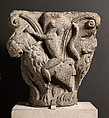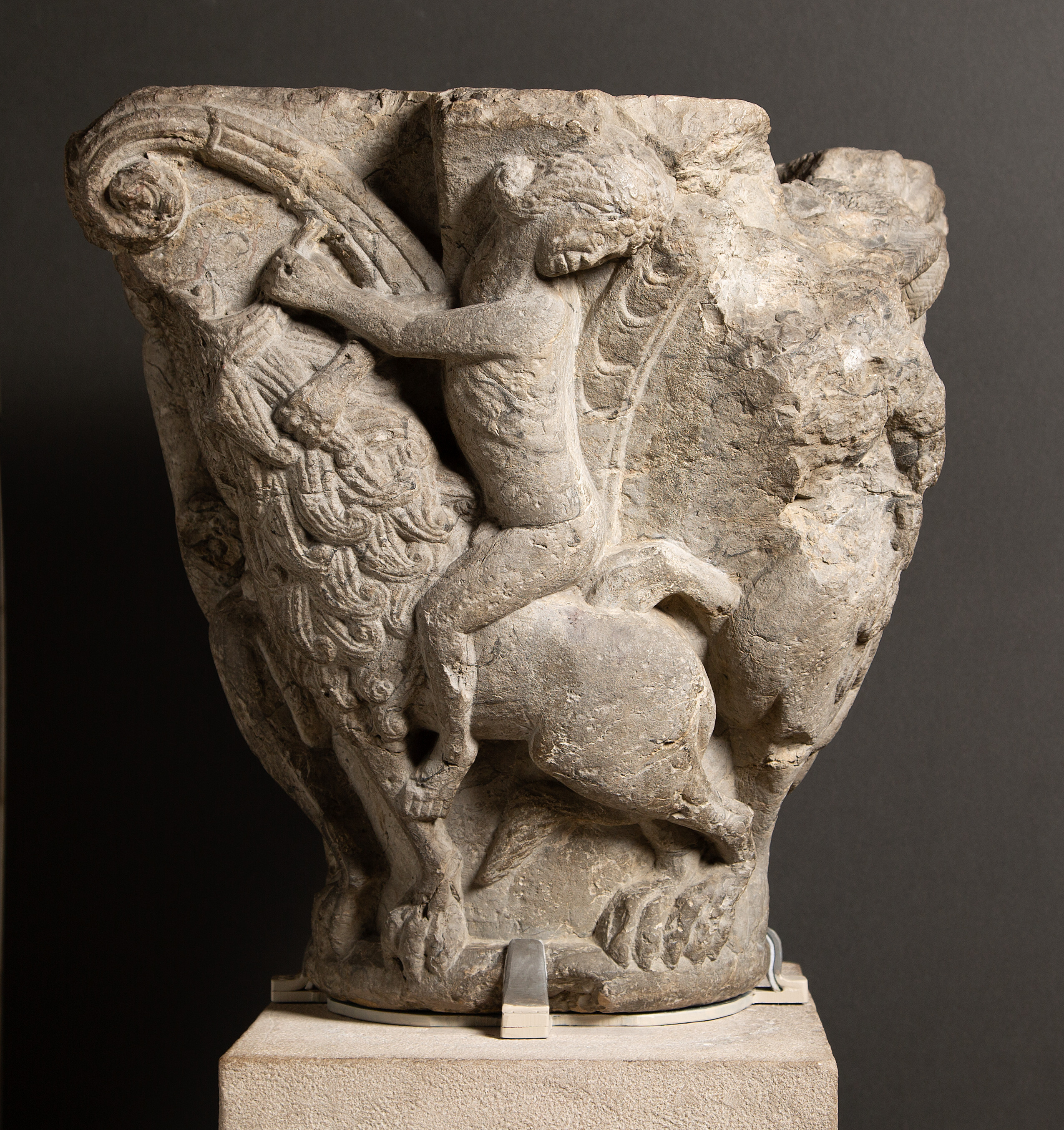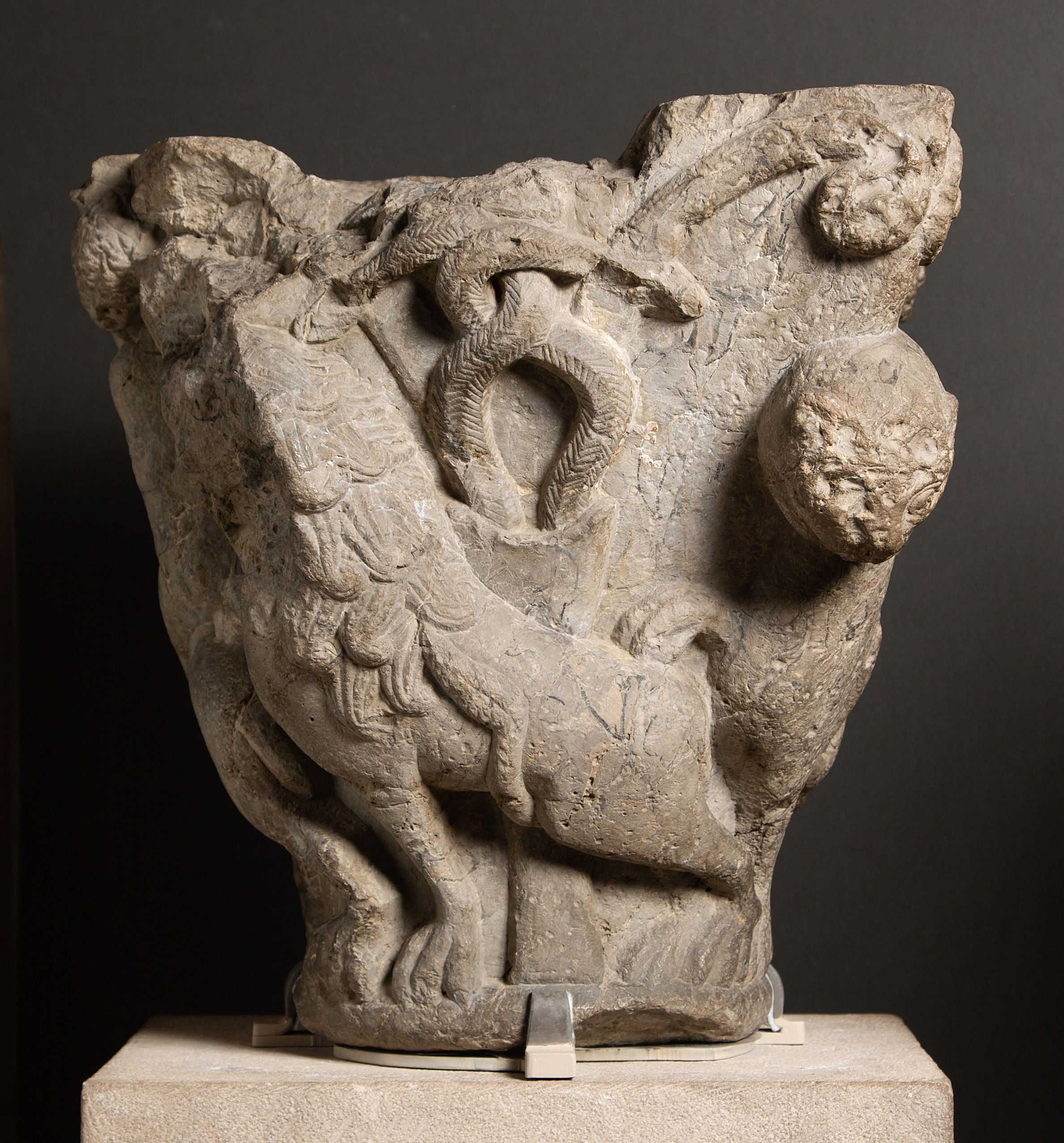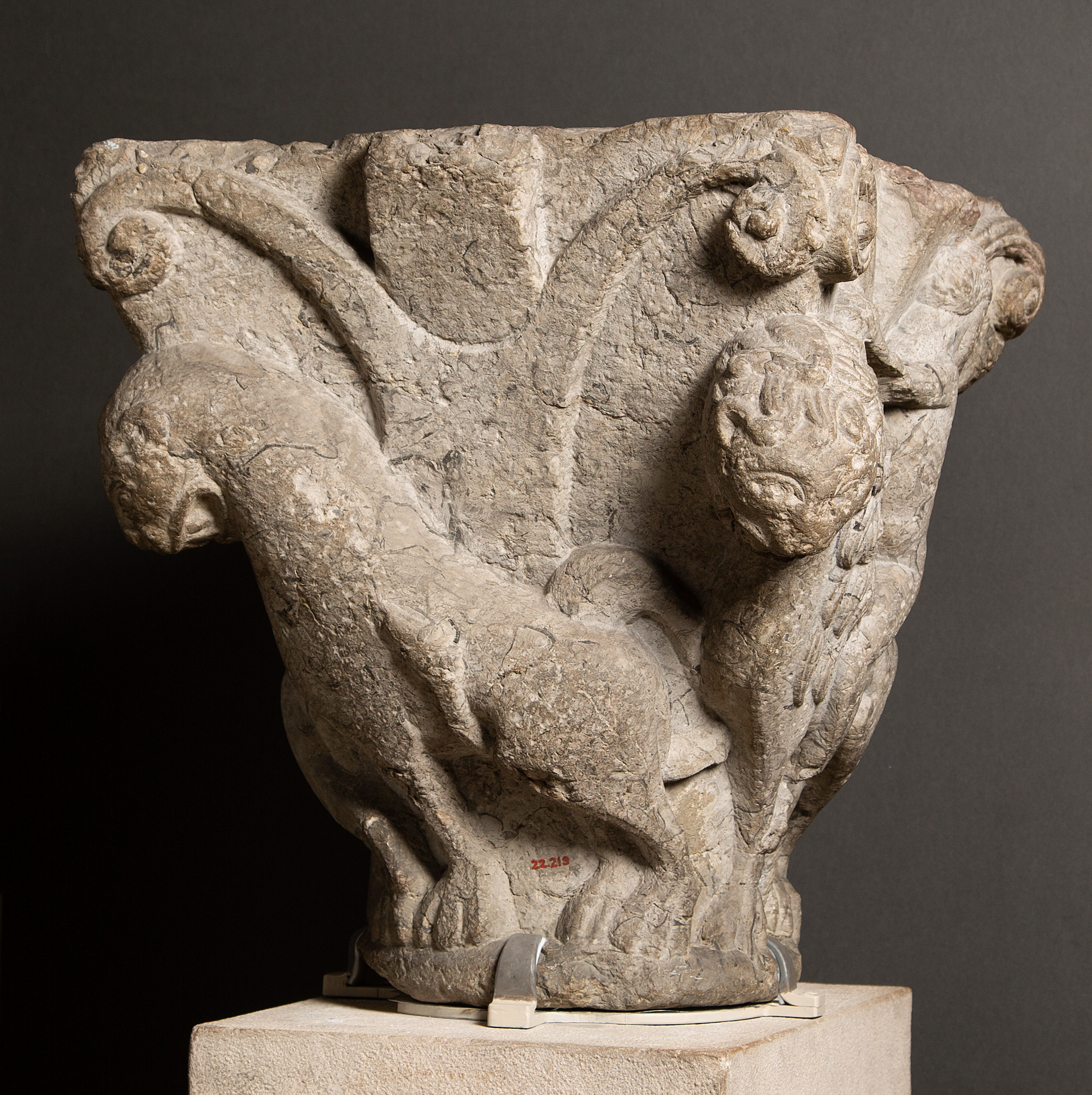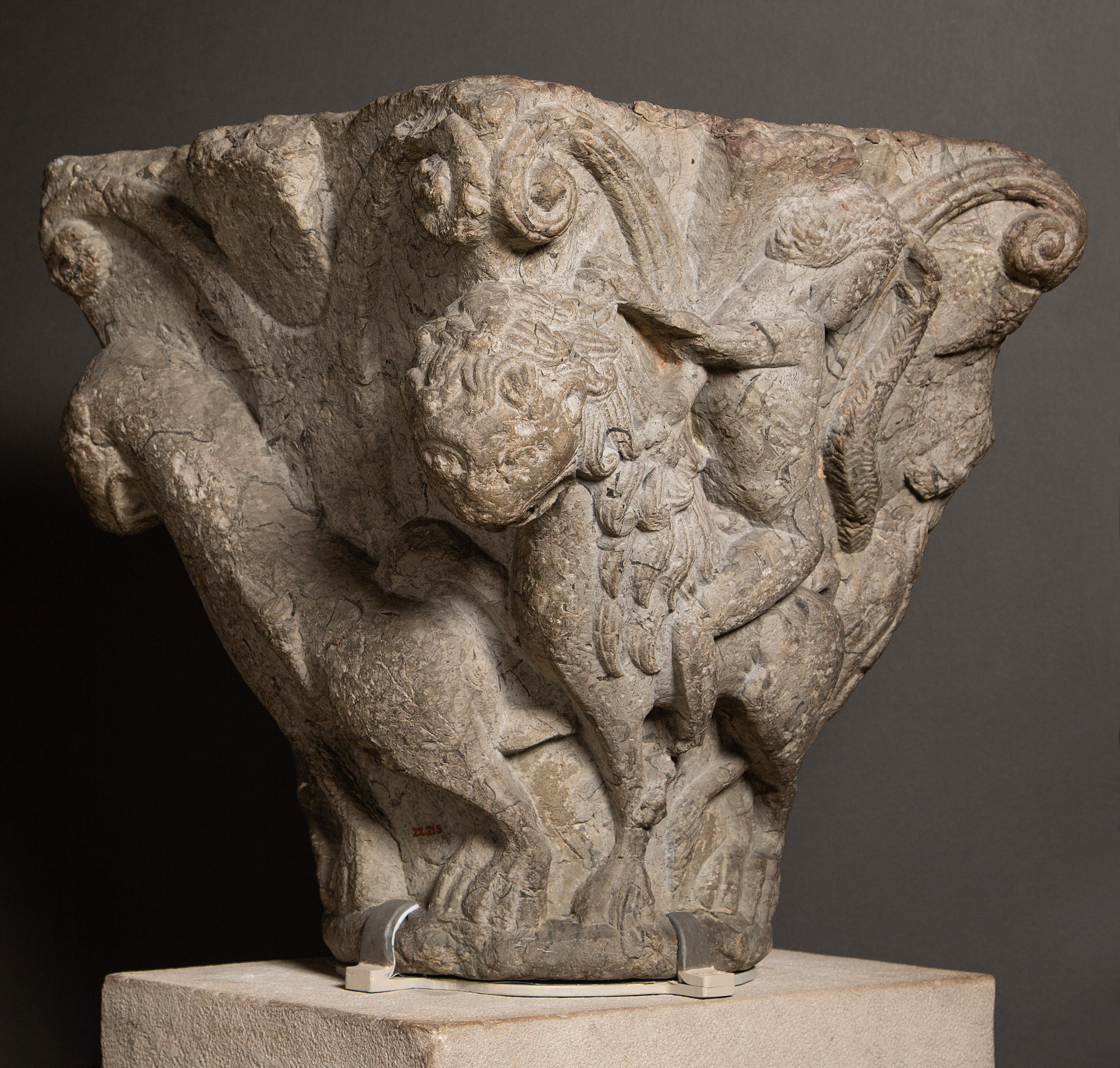Capital with Lions Mounted by Nude Riders
En el siglo XI, los artistas de Europa occidental, incluidos los de la España cristiana, desarrollaron un estilo que los historiadores describirían posteriormente como «románico» porque algunos de sus motivos, formas y técnicas recordaban a los de la Antigua Roma. Si bien es cierto que los artistas que adoptaron el estilo románico se inspiraban en la Antigüedad, fueron también grandes innovadores. Un elemento antiguo que cobró nueva vida en sus manos fue el capitel decorado, un bloque esculpido que corona una columna. En este capitel románico basado en los capiteles corintios de la Antigua Roma, ornamentados con volutas y hojas de acanto, el follaje es reemplazado por figuras y solo las volutas evocan la fuente de inspiración original. Este ejemplar incorpora otro elemento del mundo antiguo: la figura desnuda, habitual en el arte de la Antigüedad.
In the eleventh century Western European artists, including those of Christian Spain, developed a style that historians later described as "Romanesque" because some of its forms, motifs, and techniques recalled those of ancient Rome. While artists working in the Romanesque style did take inspiration from antiquity, they were also great innovators. One antique form that took on new life in their hands was the decorated capital, a sculpted block placed atop a column. Based on the ancient Roman Corinthian–style capital, which was decorated with acanthus leaves and volutes, this Romanesque capital replaces the foliage with figures, leaving only the volutes to hint at its inspiration. This example takes another cue from the ancient world in its inclusion of the nude figure, which was commonly depicted in antique art.
Due to rights restrictions, this image cannot be enlarged, viewed at full screen, or downloaded.
This artwork is meant to be viewed from right to left. Scroll left to view more.
